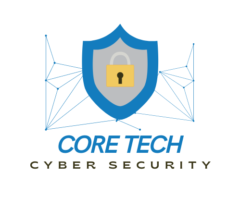As cyber threats continue to evolve, the importance of anti-malware solutions has never been greater. In 2024, we are witnessing significant advancements in anti-malware technology, driven by the need to counter increasingly sophisticated attacks. Here’s a look at the top trends shaping the future of anti-malware in 2024.
1. AI and Machine Learning-Driven Detection
One of the most significant trends in 2024 is the integration of artificial intelligence (AI) and machine learning into anti-malware solutions. These technologies enable anti-malware software to identify and neutralize threats in real-time, even those that have never been seen before.
- Behavioral Analysis: AI-driven tools now analyze patterns of behavior to detect suspicious activities that may indicate the presence of malware. This proactive approach helps in catching threats that traditional signature-based detection methods might miss.
- Adaptive Learning: Machine learning models are continuously evolving, improving their ability to recognize new types of malware based on the analysis of vast datasets. This makes anti-malware software more effective over time.
Stay ahead of threats by choosing anti-malware solutions that leverage AI and machine learning for enhanced protection.
2. Cloud-Based Anti-malware Solutions
With the increasing shift to cloud computing, cloud-based anti-malware solutions are becoming more prevalent. These solutions offer several advantages, including:
- Scalability: Cloud-based anti-malware can easily scale to protect multiple devices across different locations, making it ideal for businesses with a distributed workforce.
- Real-Time Updates: Since the software is hosted in the cloud, it can be updated in real-time with the latest threat intelligence, ensuring that users are always protected against the newest malware.
- Lower Resource Usage: Cloud-based solutions often require fewer resources on local devices, freeing up system performance while still providing robust protection.
Consider transitioning to a cloud-based anti-malware solution for comprehensive, real-time protection.
3. Ransomware Protection and Decryption Tools
Ransomware remains one of the most damaging types of malware, and in 2024, anti-malware vendors are placing a stronger emphasis on ransomware protection.
- Advanced Ransomware Detection: Modern anti-malware software is now equipped with advanced detection capabilities specifically designed to identify and block ransomware before it can encrypt your files.
- Decryption Tools: Some anti-malware solutions are also offering ransomware decryption tools that can help recover encrypted data without paying the ransom, adding an extra layer of security.
Ensure your anti-malware software includes ransomware-specific protection to safeguard your critical data.
4. Enhanced Mobile Security
With the increasing use of mobile devices for both personal and professional purposes, mobile malware is on the rise. In 2024, anti-malware solutions are expanding their focus on mobile security.
- Comprehensive App Scanning: Anti-malware apps are now more sophisticated in scanning for malicious apps, ensuring that all downloaded apps are safe and free from malware.
- Phishing Protection: Mobile anti-malware is also improving its phishing detection capabilities, protecting users from malicious links and emails that attempt to steal personal information.
- Real-Time Alerts: Users are now receiving real-time alerts on their mobile devices if a threat is detected, allowing them to take immediate action.
Protect your mobile devices with anti-malware software that offers comprehensive mobile security features.
5. Zero-Day Threat Protection
Zero-day threats, which exploit vulnerabilities that have not yet been patched, continue to be a major concern. In 2024, anti-malware solutions are enhancing their zero-day protection capabilities.
- Exploit Prevention: Anti-malware tools are now better equipped to detect and block exploit attempts, even if the vulnerability being targeted is not yet known.
- Virtual Patching: Some advanced anti-malware solutions offer virtual patching, which provides a temporary fix to vulnerabilities until the official patch is released by the software vendor.
Choose anti-malware software that includes zero-day threat protection to defend against the latest and most dangerous attacks.
6. Integration with SIEM and SOAR Systems
For enterprises, the integration of anti-malware solutions with Security Information and Event Management (SIEM) and Security Orchestration, Automation, and Response (SOAR) systems is becoming increasingly important in 2024.
- Centralized Threat Management: By integrating with SIEM and SOAR, anti-malware solutions can provide centralized management of security threats, making it easier for security teams to monitor, detect, and respond to incidents.
- Automated Responses: Integration with SOAR systems allows for automated threat responses, reducing the time it takes to mitigate malware attacks and improving overall security posture.
For enterprises, consider anti-malware solutions that can integrate with your SIEM and SOAR systems for streamlined and automated security management.
Conclusion
The landscape of anti-malware is rapidly evolving, with new technologies and strategies emerging to combat the ever-growing threat of malware. In 2024, staying protected means adopting solutions that incorporate AI and machine learning, embracing cloud-based protection, and ensuring comprehensive security across all devices, including mobile. By understanding these trends and choosing the right anti-malware tools, you can safeguard your data and systems against the latest cyber threats.
